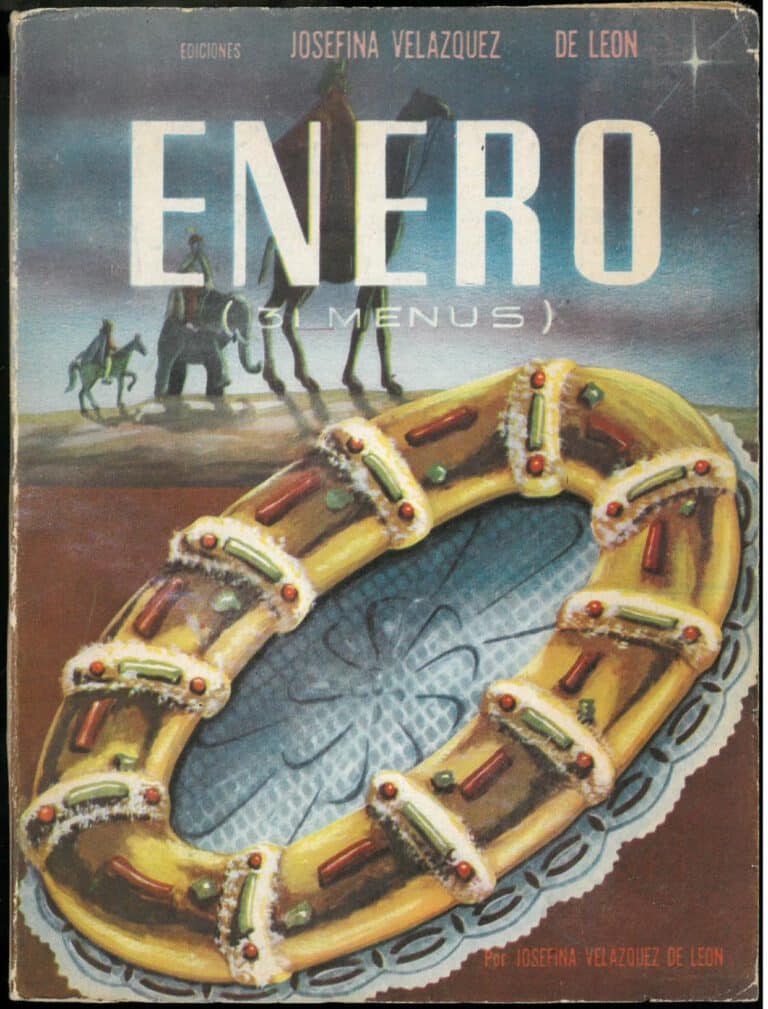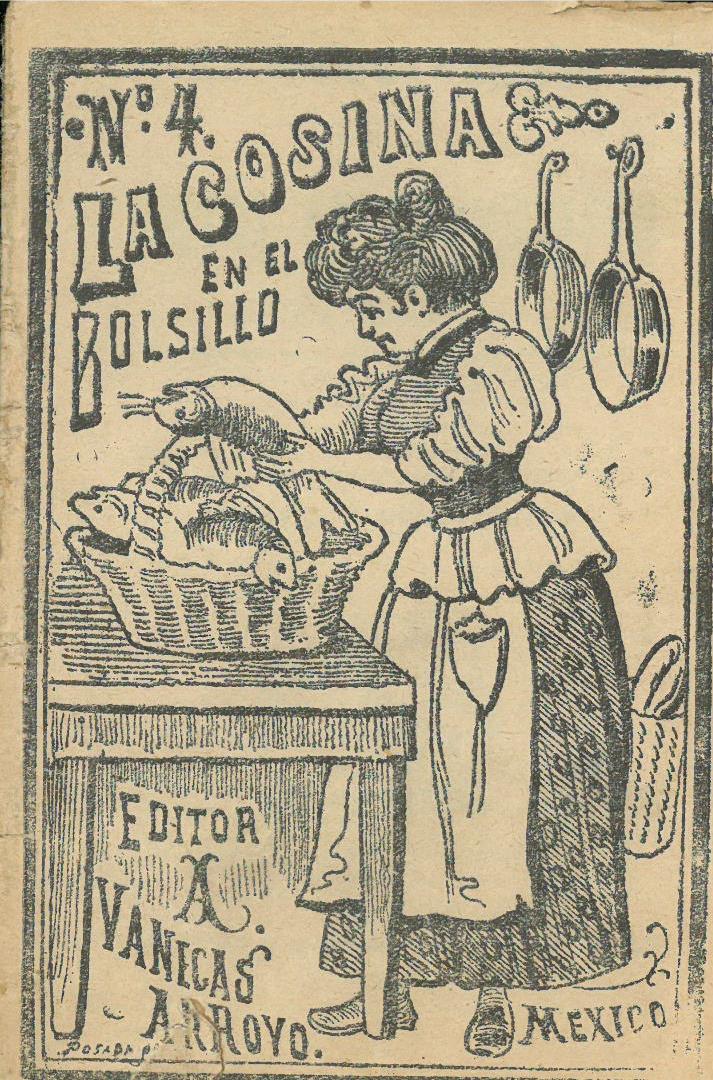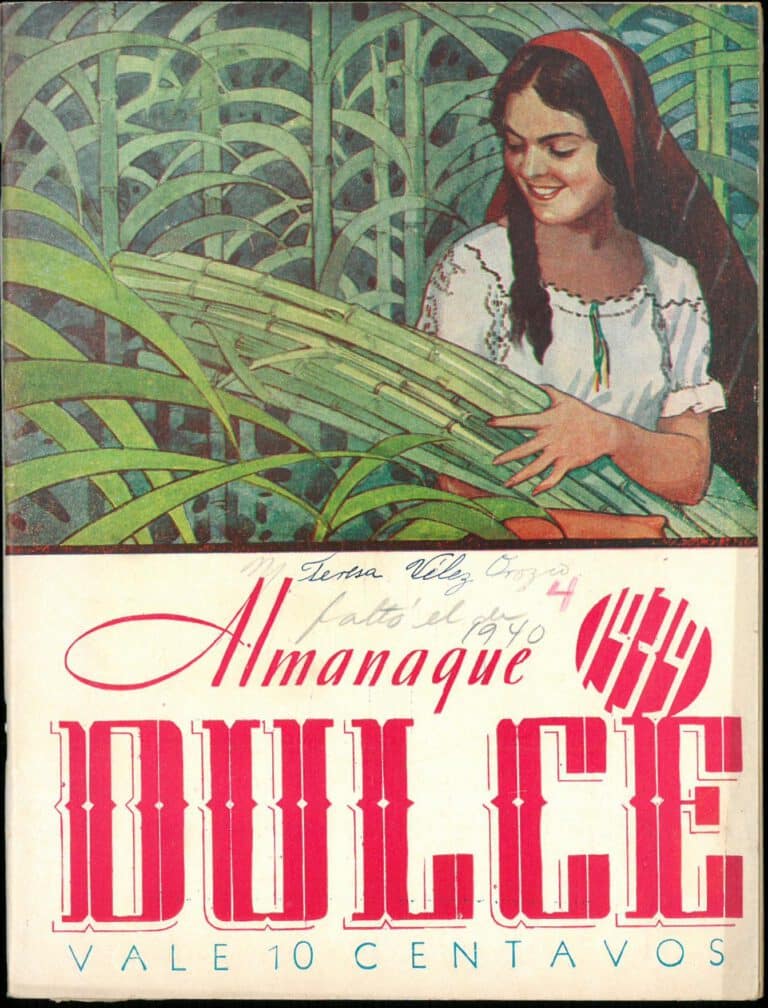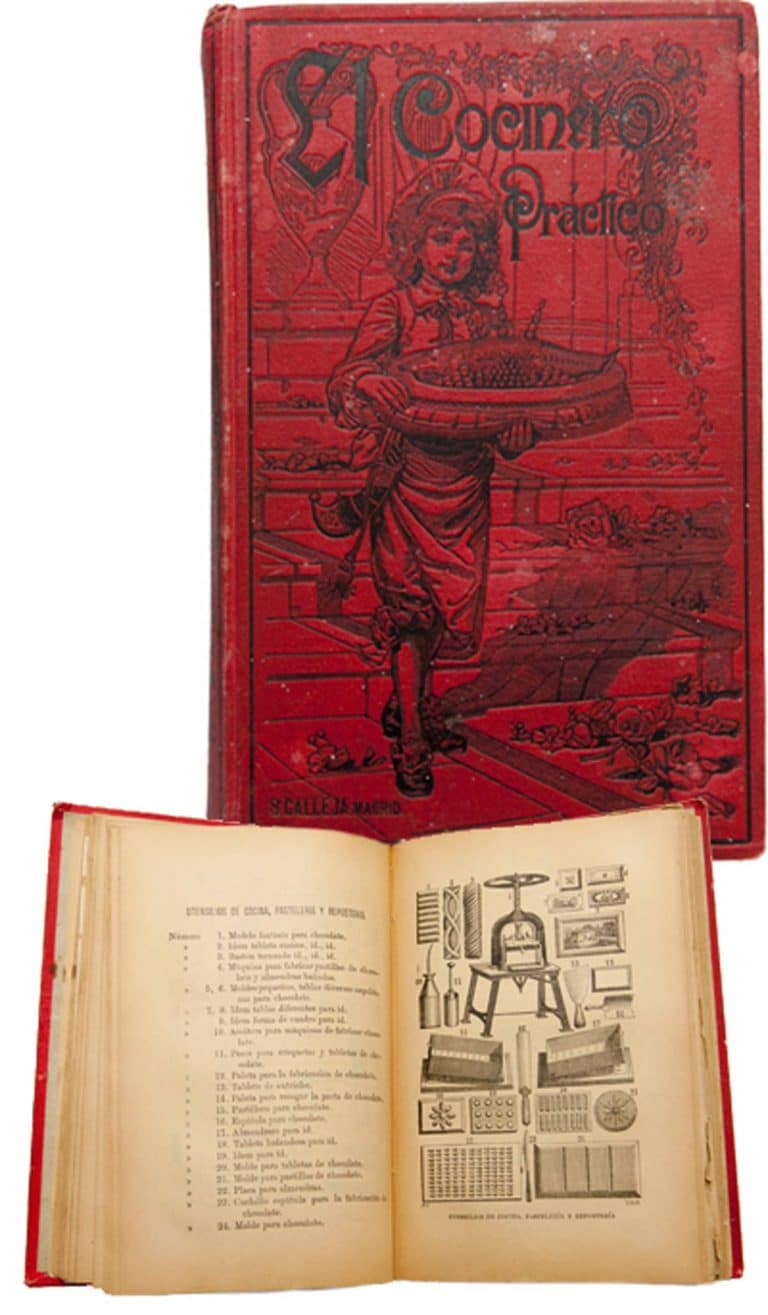Cocina Michoacana (1896)
Torres de Rubio, Vicenta. Cocina Michoacana (Zamora : Imprenta Moderna, 1896). [TX716.M4 T67 1896].
The first regional Mexican cookbook, and possibly the first cookbook published in Mexico to be written by a woman, Vicenta Torres de Rubio’s Cocina Michoacana is a culinary milestone in Mexican history.
“Regional” in this case, however, does not mean that the cookbook contains (as some modern readers might expect) only recipes with indigenous roots and only from the state of Michoacán. The contents of Torres’ book are much more cosmopolitan, including Rosbif á la Salisbury, French Galatina (Aspic), and numerous other such dishes. In part, this may suggest that to middle and upper class women of late 19th c. Mexico, the preparation of European haute cuisine was as important a part of “their” regional society and familial culinary traditions as mole.
Furthermore, although the dedication reads “A las Señoras y Señoritas Michoacanas,” Torres’ book includes recipes contributed by cooks throughout Mexico. Cocina Michoacana was initially published as a serialized guide featuring recipes submitted by women within the state. However, as Torres’ audience grew, she later included recipes submitted from locations as far flung as Mexico City and Nuevo Laredo. [1] In Que Vivan Los Tamales!: Food and the Making of Mexican Identity, Jeffrey Pilcher suggests that Cocina Michoacana functioned as a kind of community cookbook, in which women had the opportunity to “imagine their own national community in the familiar terms of the kitchen” as they experimented with regional dishes contributed by their counterparts across Mexico. [2]
Cocina Michoacana is organized into numerous short chapters of related dishes. Certain chapters are clearly marked as important through the use of typographical markers like large wooden type and printing ornaments. However, there are several different typefaces of various sizes used for apparent chapter headings, making it difficult to differentiate chapters from sub-chapters while reading the recipe portion of the cookbook. In the list below, I have compiled a list of chapters in the first half of the cookbook, and in some cases, the top-level sub-chapters. In determining what to include in the list, I relied on the index located between the Sección Mexicana and Miscelanea chapters. Where possible, I have included English translations of the chapter titles in italics. Uncertain and possible translations are enclosed in brackets. I would welcome your suggestions in the comments!
I have not been able to identify a definite pattern when it comes to which kind of typeface is used for which chapter headings, and even the index is not always entirely clear. There is significant overlap between typefaces used for chapters and sub-chapters listed in the index and those identified as significant only by a distinctive typeface in the text itself. Since the publication was issued serially, I suspect its organization evolved with time. There may not be a universal design schema. Additionally, it’s possible that some of the variation simply stems from what was available in the print shop at the time a particular section was being typeset and the typesetter’s whim that day.
Terminos Tecnicos / Technical Terms
Guisados de Verduras / Vegetable Casseroles or Stews
Guisados de Carne / Meat Stews
Salsas para Viandas / Sauces for Food
Ensaladas / Salads
Guisados de Aves / Poultry Stews
Varias Aves / Various Poultry
Mole, Clemole, Pipian, y Mancha-Manteles / Mole and related dishes with sauces
Pastas, Sopas, Timbales y Tortas / Pasta, Soups, Meat Pies and Sandwiches (or Omelets)
Timbales / Meat Pies
Tortas y Tortillas / Sandwiches, Tortillas, and Spanish Tortillas
Las Tortas / Sandwiches
Tortilla / Tortillas and Spanish Tortillas
Tortas en combinación con el azúcar / Sweet Sandwiches and Spanish Tortillas
Torrijas / French Toast
Los Jamones / Ham
Embutidos o Embuchados / Sausages
Butifarras / Catalan Sausage
Morcillas / Blood Sausage
Lenguas Sin Humo / Unsmoked Tongue
Lenguas al Humo / Smoked Tongue
Galantina / Aspic
Fiambre / Cold Cuts
Lomos Aprensados / Loins [?]
Pescados, Crustáceos y Moluscos / Fish, Crustaceans, and Molluscs
Pescado en Diversos Guisados / Various Fish Stews or Casseroles
Almeja / Clams
Ancho (O Boqueron) / Anchovy
Anguila o Congrio / Eel
Atun / Tuna
Arenque / Herring
Bacalao, Bacallao ó Abadejo / Cod, Haddock, or Bacallao
Bagre / Catfish
Besugo / Sea Bream
Bobo / Ictalurid catfish such as channel catfish or freshwater mullet Joturus pichardi
Calamar / Squid
Camarones / Shrimp
Cangrejo / marble crab or crawfish
Carpa / Carp
Escombro / Mackeral
Lamprea / Lamprey
Merluza / Hake
Mero / Grouper
Mojarra / Sea Bream in Spain, but in Mexico more likely to refer to gerreids or cichlids.
Ostra ú ostión / Oyster
Rana / Frog
Raya / ray
Robalo / Sea bass
Rombo o Rodaballo / Turbot
Sabalo / Shad
Salmón / Salmon
Salmonete / [?possibly red mullet?]
Sardina / Sardine
Trucha / Trout
Truchuela / [?]
Piló Africano / [?]
Purés / Purée
Budín / Pudding
Sazon de Sal [?seasoning. Possibly salty or savory?]
Pudín en combinación con el azúcar / Pudding with Sugar
Vinagre / Vinegar
Encurtidos / Pickles
Hortalizas y Legumbres Encurtidas / Pickled Vegetables and Legumes
Chiles Diversos / Various Chiles
Frijoles / Beans
Sistema Métrico Decimal / Decimal Metric System
La Panificación / Breadmaking
La Levadura / Yeast
La Harina. Sus Diversas Aplicaciones / Flour. Its Various Uses.
Biscotelas / Egg Breads
Bollos y Bollitos / Rolls
Bollitos / Rolls
Brazaletes / [?]
Buñuelos / Fritters
Dijes / [?]
Galletas / Cookies
Gaznates [?pastries – possibly a specific type filled with cream?]
Empanadas / [Pastries filled and folded into half circles]
Hojaldres / Puff Pastry
Hojuelas / [A specific type of fried pastry]
Masas / Dough
Mamónes / Cakes
Mollete / Muffin
Pastel / Cake
Cacerola Caliente de Codornices / Hot Quail Casserole
Roscas / [Ring-shaped cake or sweet bread]
Vol-au-vent / [A specific type of puff pastry]
Helados, Sorbetes y Nieve / Ice Cream, Sorbet, and Ices
Dulces de Casa / [?Home sweets?]
Ante [Literally ‘before’ but not quite the same as an appetizer]
Cajeta / Soft Toffee
Compotas / Compotes
Cremas / Creams
Flan o Flaon / Flan
Golocinas / Candy
Jalea / Jelly
Jericalla / Custard
Leche compuesta / [?]
Manjar / Delicacies (often used to describe various desserts along the lines of blancmange, but while the recipes under Manjar in this book are milk-based and contain sugar, they also all include chicken breast meat)
Mazapan / Marzipan
Mermalada / Marmalade or Jam
Mostachónes / Macaroons
Nata ó natilla / Cream or Custard
Pasta de Leche y Coco / Milk and Coconut Paste
Frutas al Pastor / [Fruits of ?]
Postres / Desserts
Pudín / Pudding
Requesón / Cottage cheese
Rosquillas / Doughnuts
Tarta ó tortera / Tarts
Tortas / Cakes (An earlier chapter contained tortas as sandwiches)
Turco / In the plural (turcos), sometimes refers to pork-filled flour empanadas; in this case, however,
Tortillas Azucaradas / Sweet Tortillas
Turrón / Nougat
Frutas Almibaradas / Fruit in Syrup
Confección de los licores / Liquor Preparation
Ponches / Punches
Rompope / Eggnog
Jarabes / Syrups
Sangría / [Wine with Fruit]
Seccion Mexicana / Mexican Section
El Pulque / Pulque
Chicha / [Corn-based drink]
El Maíz / Corn
Tamales o Nacatamales Michoacanos / Tamales
El Trigo / Wheat
Otro Almidón / Other Starches
El Queso / Cheese
Miscelanea / Miscellaneous
Escritorio / [Appears to mean various notes as used here]
Diversas Preparaciónes para el Tocador / Preparations for the Dressing Table
Medicamentos Heroicos / [?Medications?]
Medicina Domestica / Home Remedies
Sección de Cocina / Section on the Kitchen
Cerma para Viandas / ? for food?]
Espesos / [?Possibly thickeners?]
[1] Jeffrey Pilcher, Que Vivan los Tamales!: Food and the Making of Mexican Identity(Albuquerque: University of New Mexico Press, 1998), 67.
[2] ibid.



![México: Tierra de Antojitos [1960s].](https://lacocina.utsa.edu/wp-content/uploads/2013/06/txsau-tx716-m4-w338-1960-insert_001-768x1052.jpg)




3 Comments